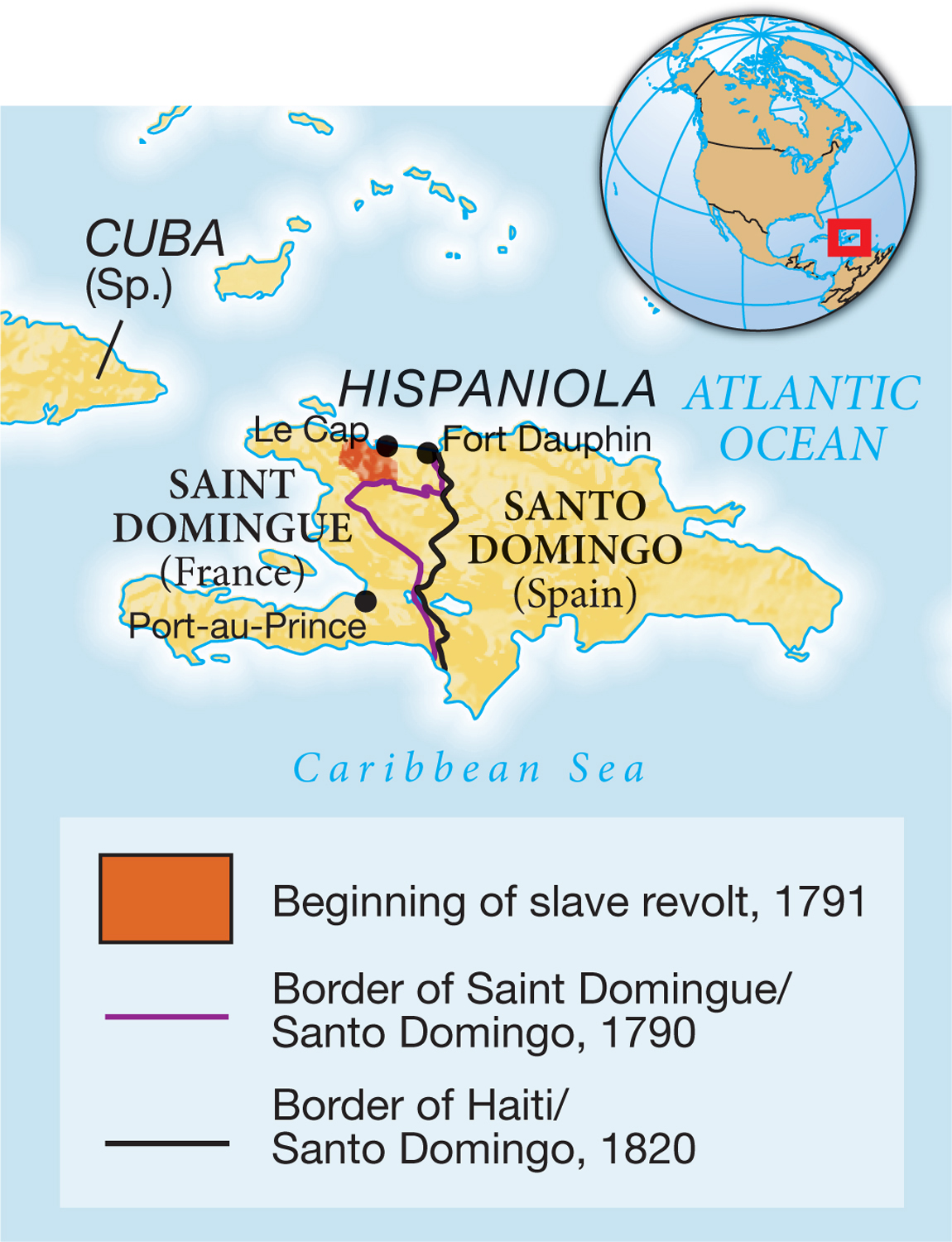The American Promise:
Printed Page 224
The American Promise Value
Edition: Printed Page 231
The Haitian Revolution

In addition to the Indian troubles and the European war across the Atlantic, another bloody conflict to the south polarized and even terrorized many Americans in the 1790s. The French colony of Saint Domingue, in the western third of the large Caribbean island of Hispaniola, became engulfed in revolution starting in 1791. Bloody war raged for more than a decade, resulting in 1804 in the birth of the Republic of Haiti, the first and only independent black state to arise out of a successful slave revolution.
The Haitian Revolution was a complex event involving many participants, including the diverse local population and, eventually, three European countries. Some 30,000 whites dominated the island in 1790, running sugar and coffee plantations with close to half a million blacks, two-

The French Revolution of 1789 was the immediate catalyst for rebellion in this already tense society. First, white colonists challenged the white royalist government in an effort to link Saint Domingue with the new revolutionary government in France. Next, the mixed-
White Americans followed the revolution in horror through newspapers and refugees’ accounts. A few sympathized with the impulse for liberty, but many more feared that violent black insurrection might spread to the United States. Many black American slaves also followed the revolution, for the news of the success of a first-
The Haitian Revolution provoked naked fear of a race war in white southerners. Jefferson, agonizing over the contagion of liberty in 1797, wrote another Virginia slaveholder that “if something is not done, and soon done, we shall be the murderers of our own children . . .
Jefferson’s cataclysmic fears were not shared by New Englanders. Timothy Pickering of Massachusetts, in Washington’s cabinet since 1795, chastised the inconsistent Jefferson for supporting French revolutionaries while condemning black Haitians fighting for freedom just because they had “a skin not colored like our own.” Not that Pickering supported either type of violent revolutionary—
REVIEW Why did the United States feel vulnerable to international threats in the 1790s?